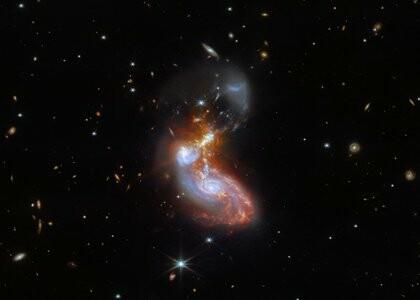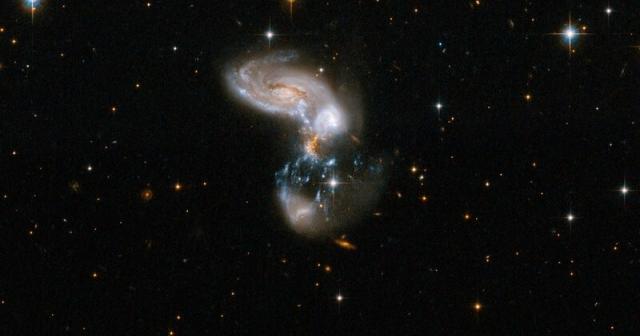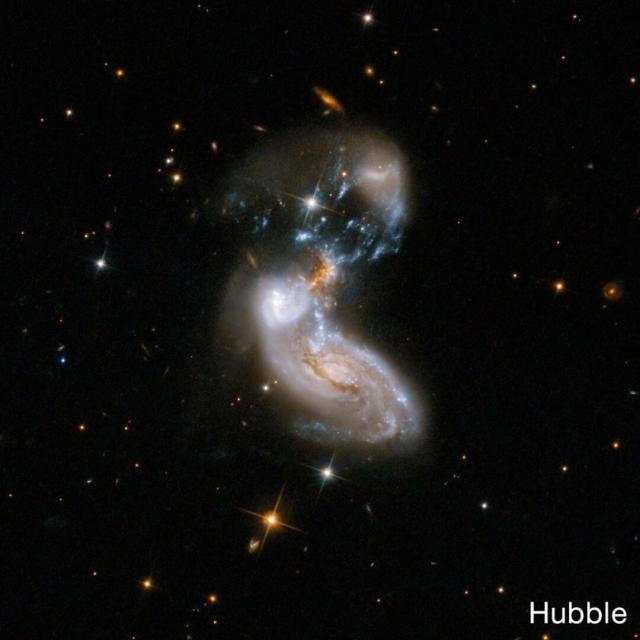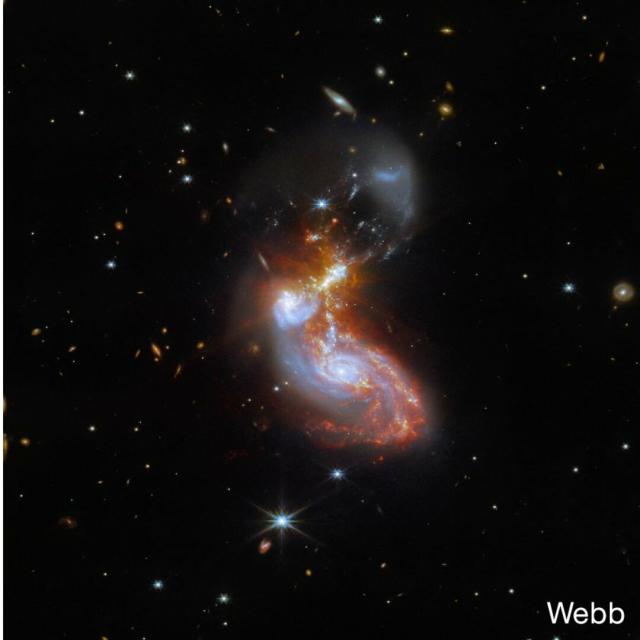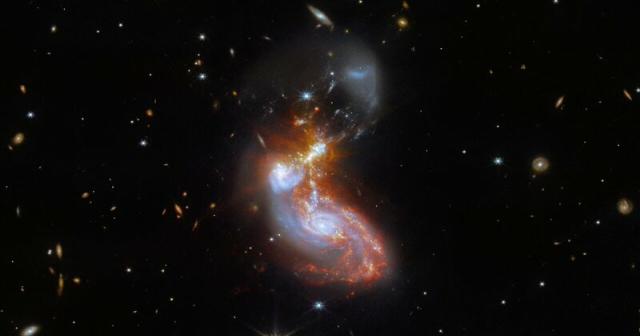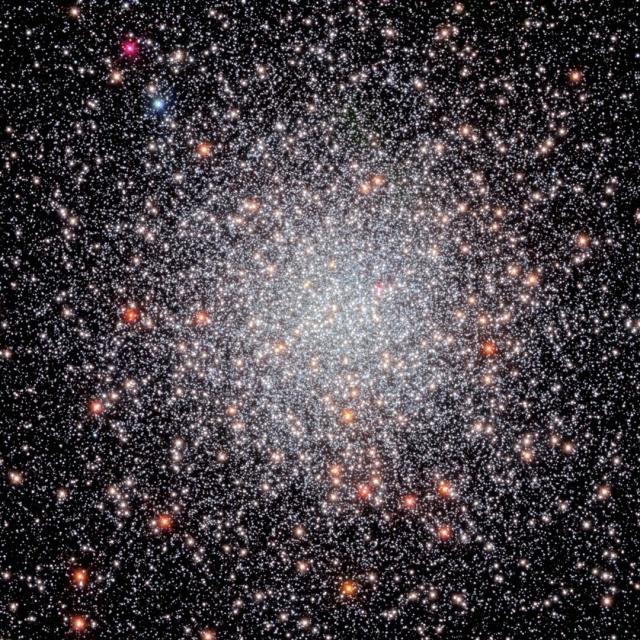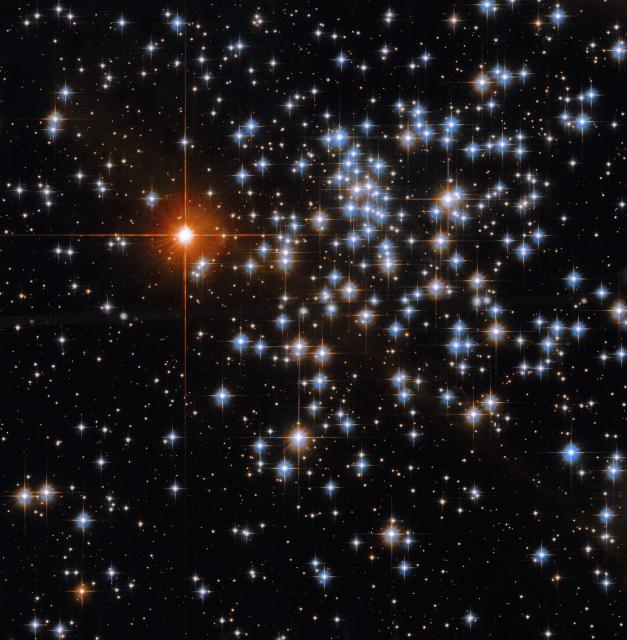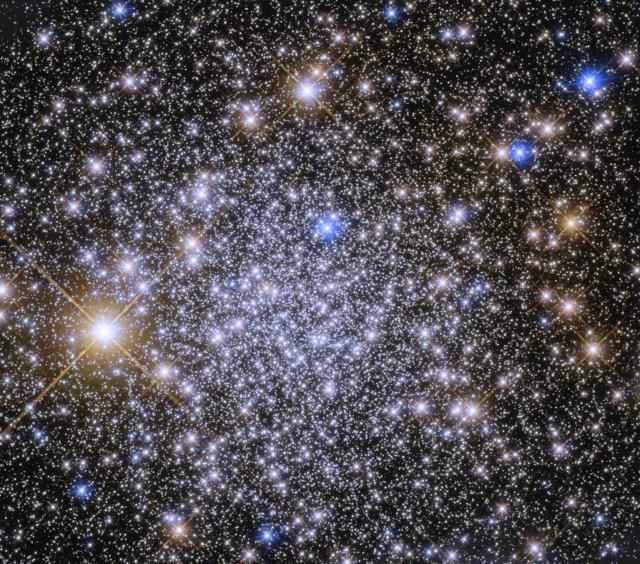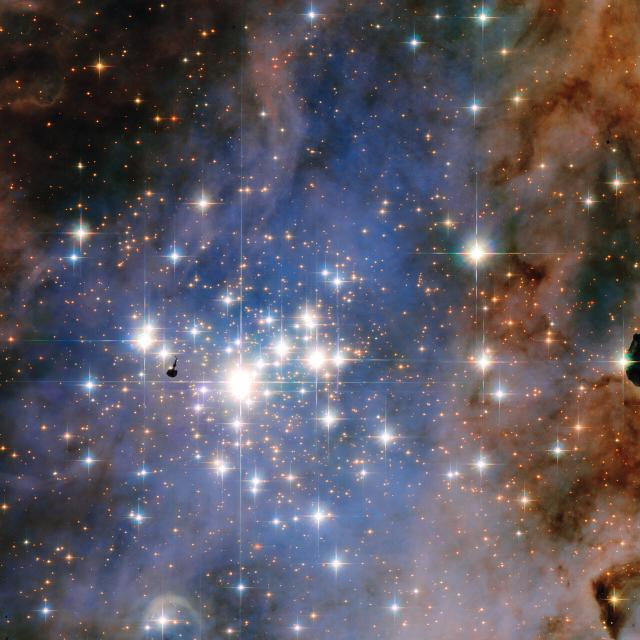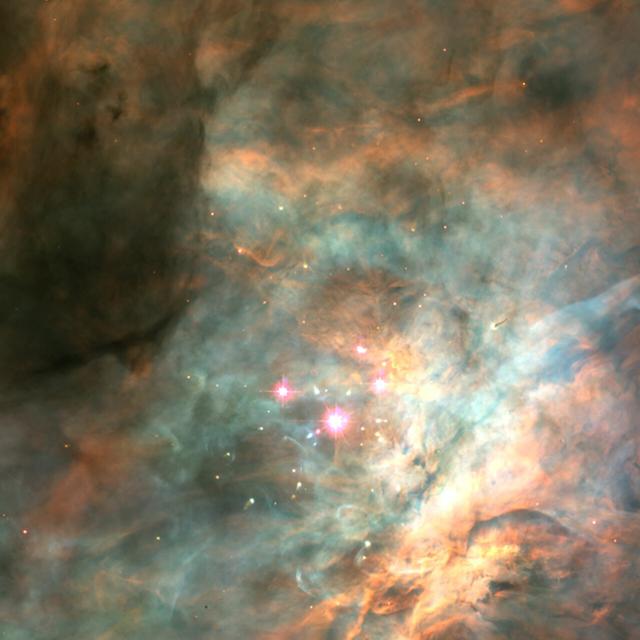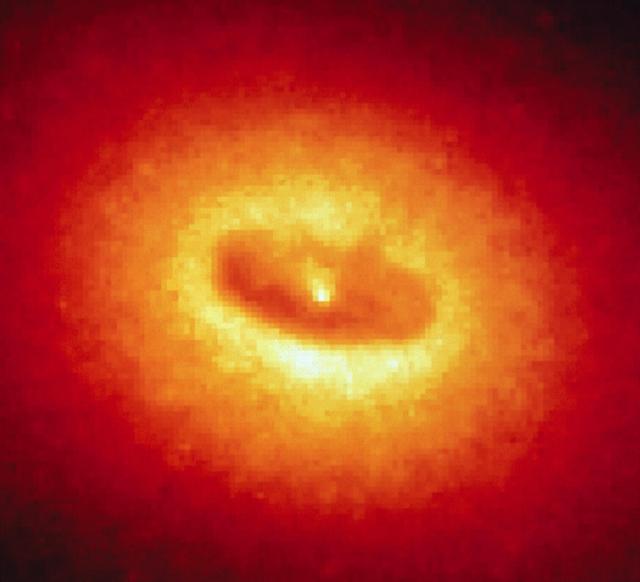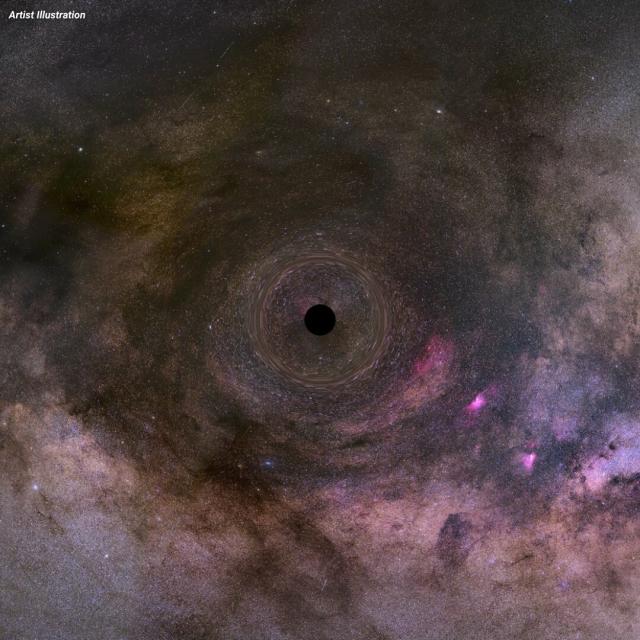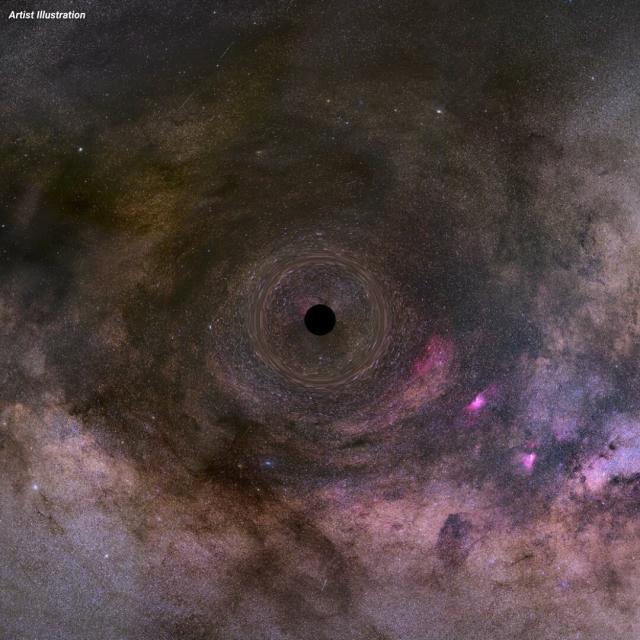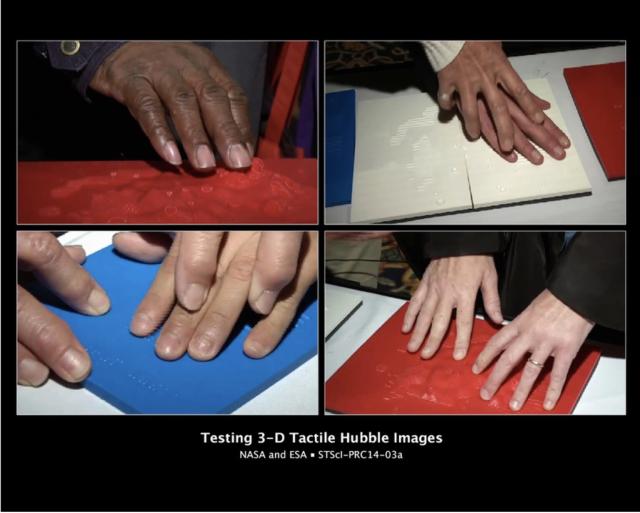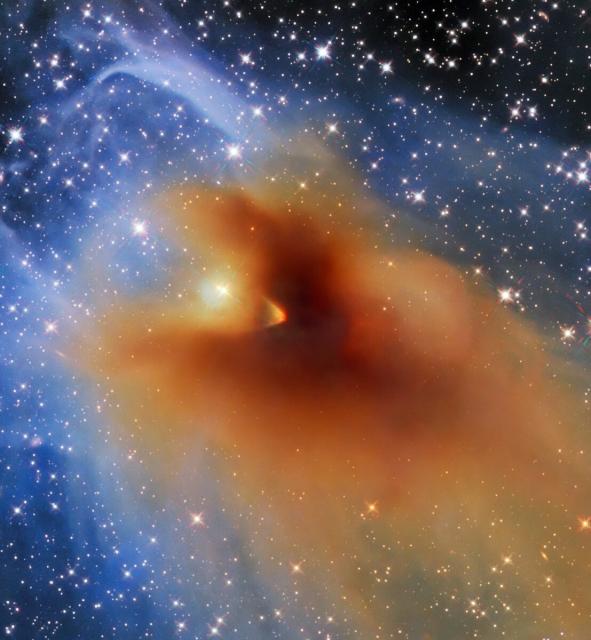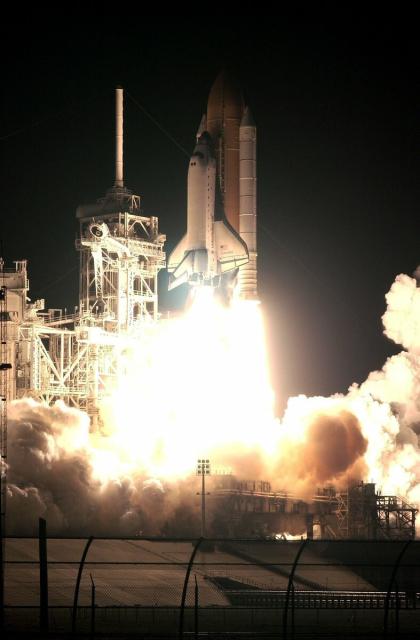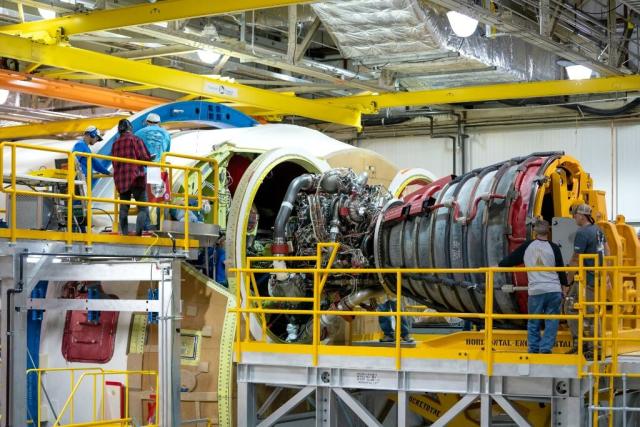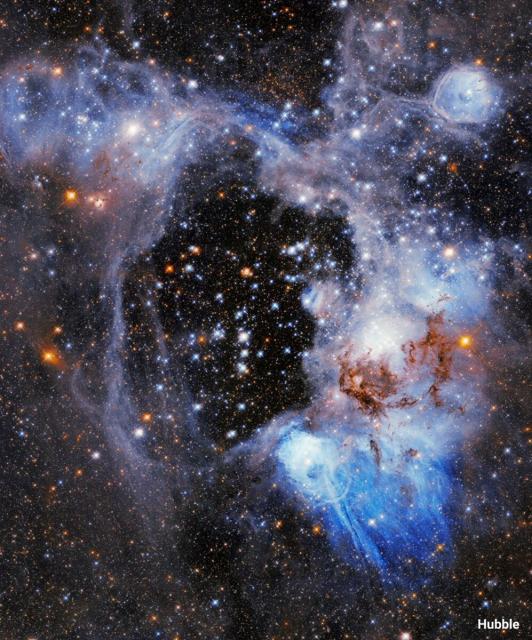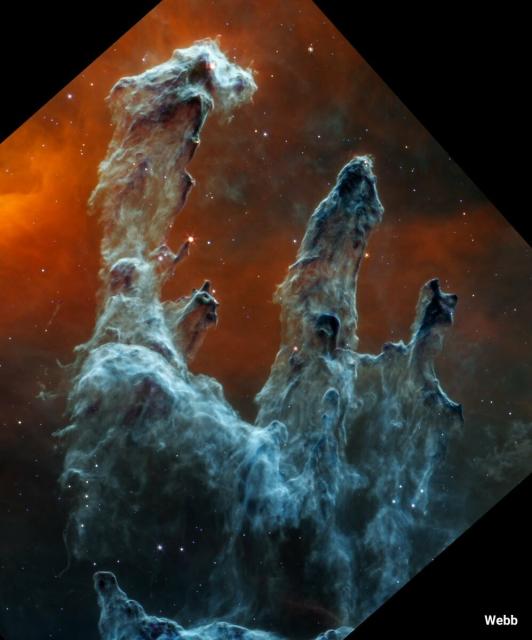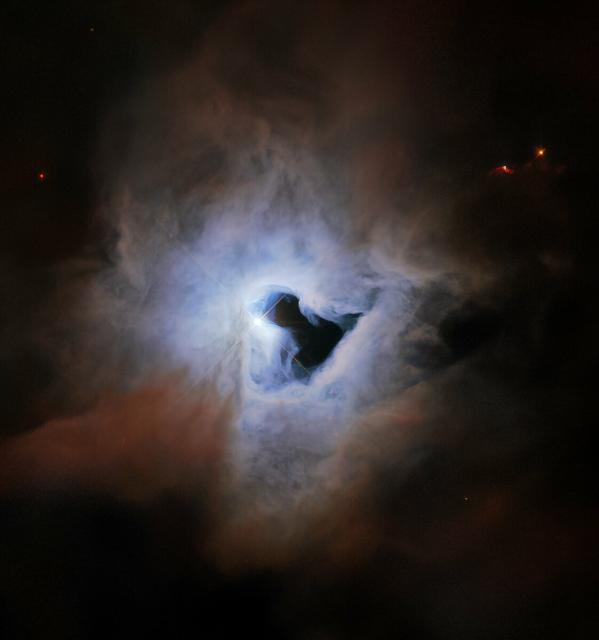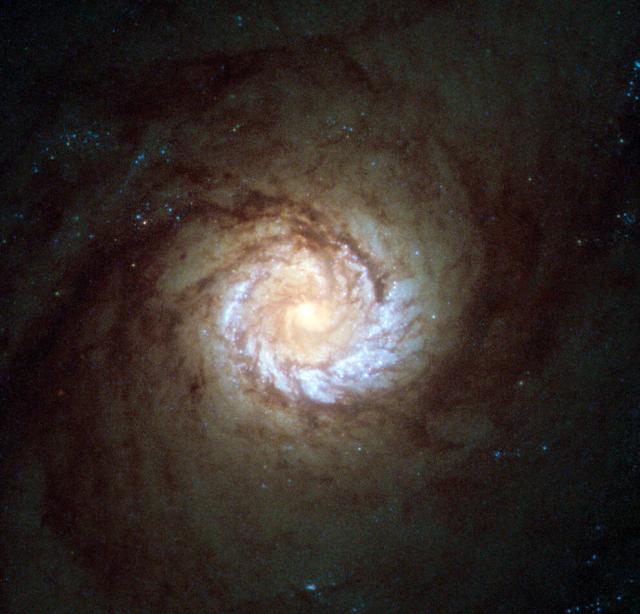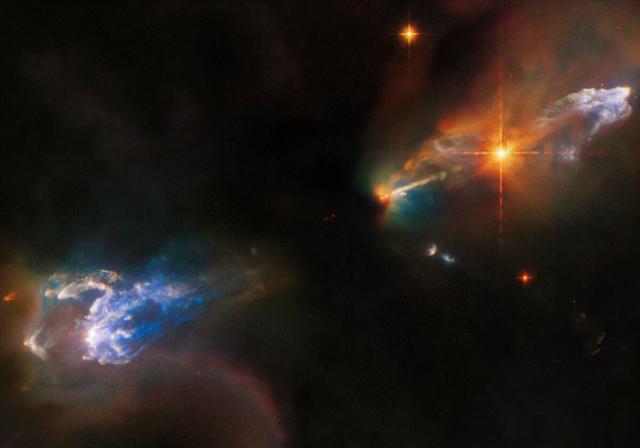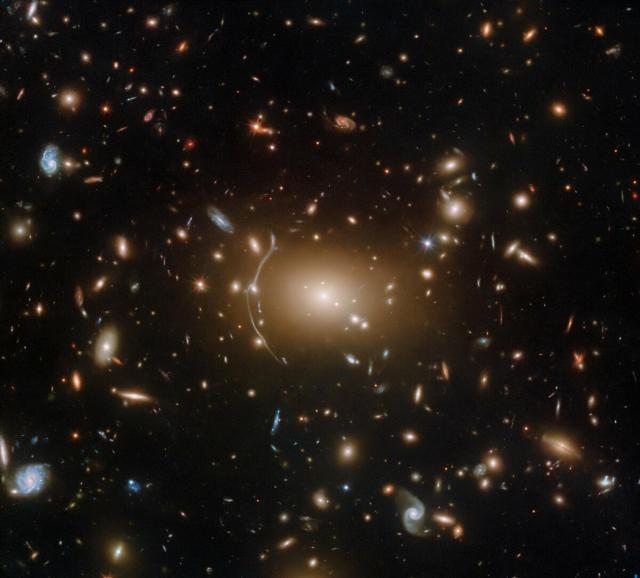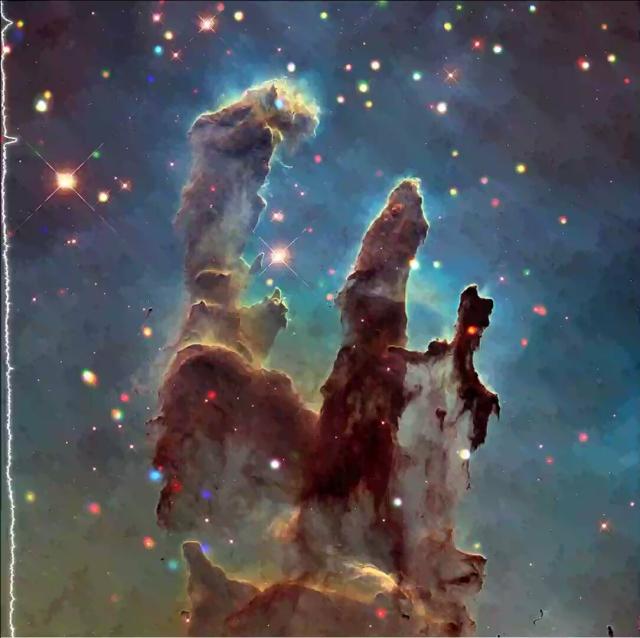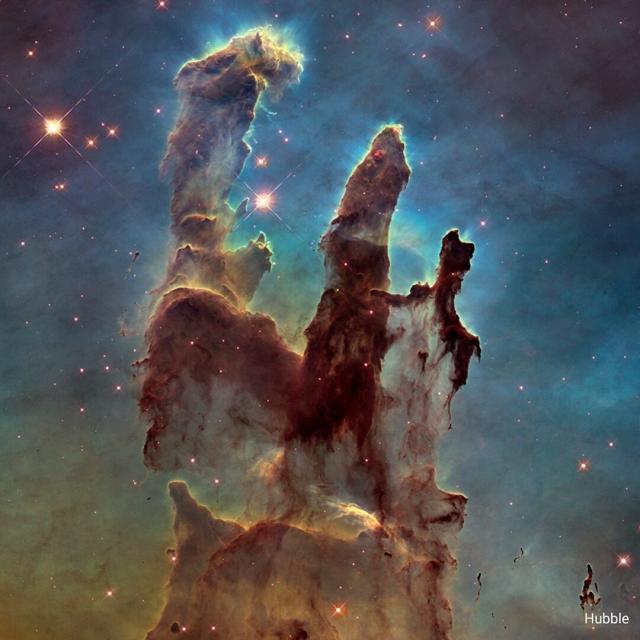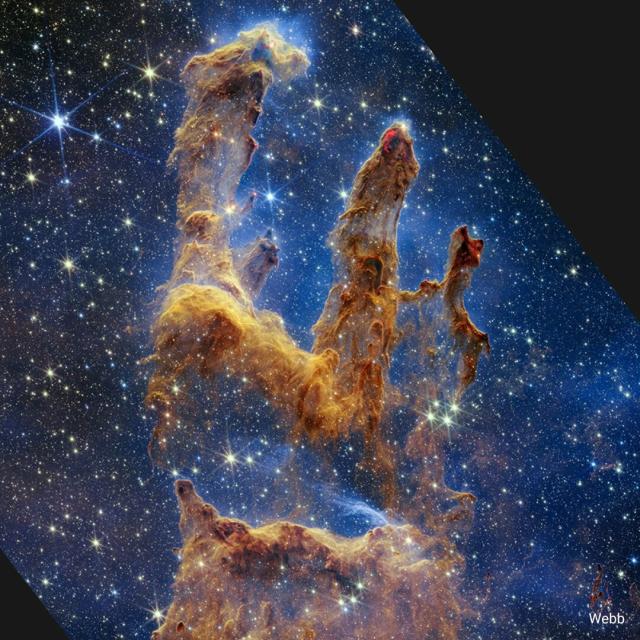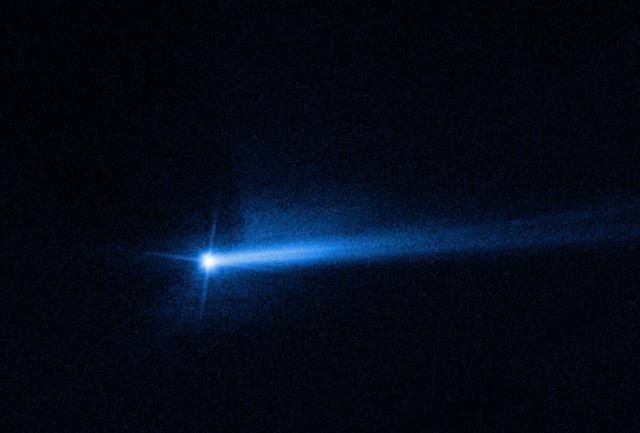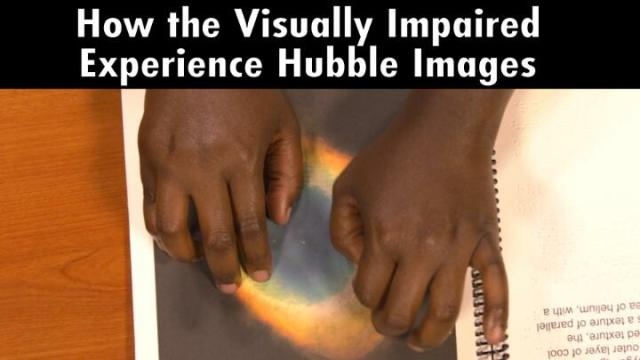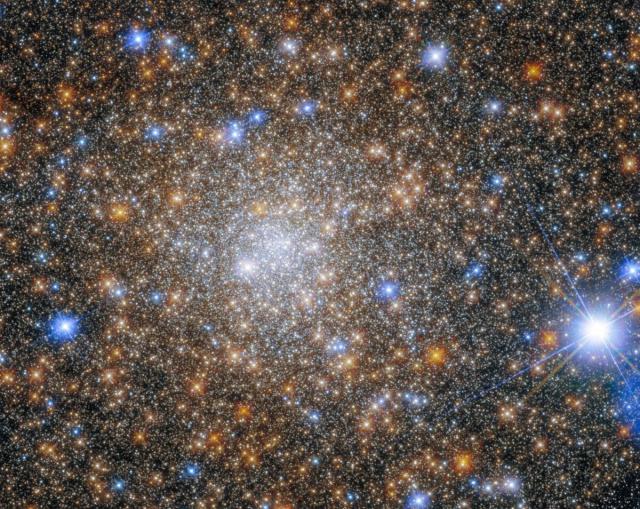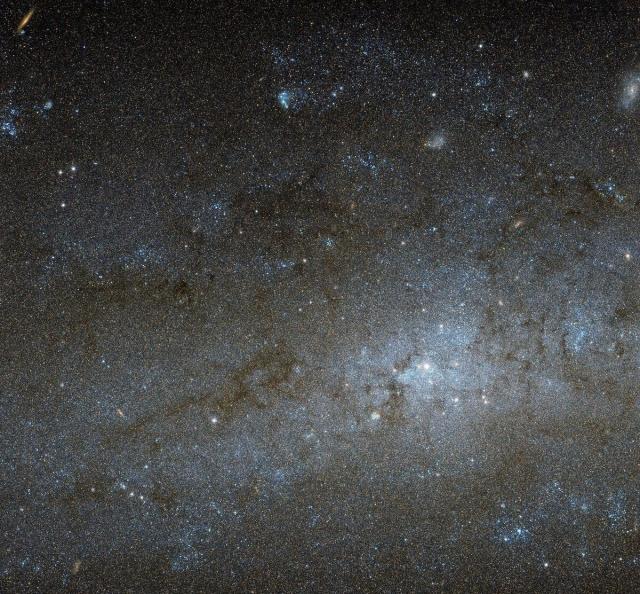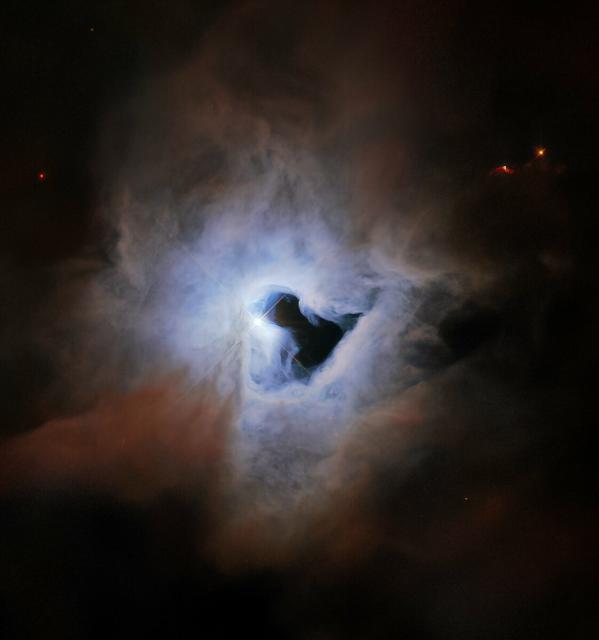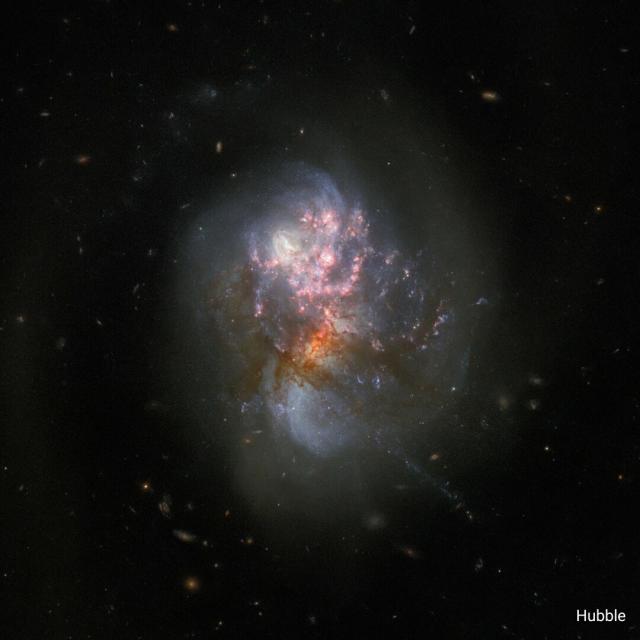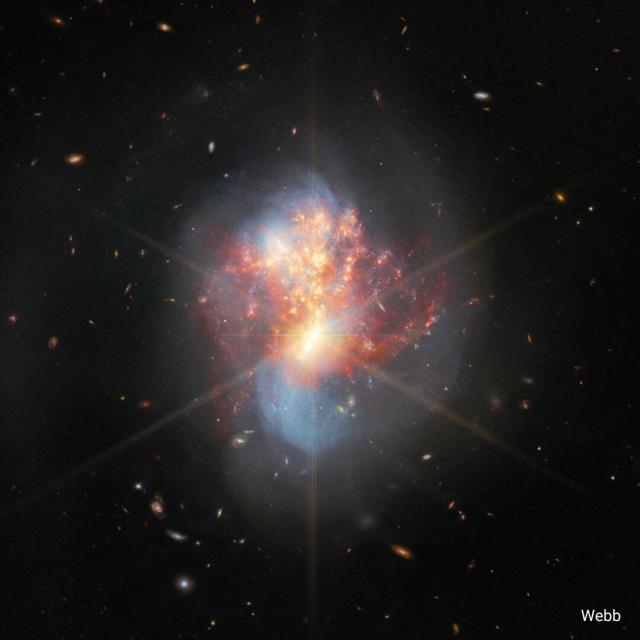Search
Items tagged with: hubble
However, Webb’s view showcases the brightness of the star-forming regions which have been activated by this merger, which are particularly luminous in infrared light, which Webb observes.
In Hubble’s visible-light view from 2008, the starburst systems that have formed between the two galactic cores with their older stars are clearly seen.
A pair of views of a pair of (merging) galaxies? Yes, please!
Hubble and @NASAWebb have both observed the galactic pair II ZW 96 in different wavelengths of light.
You can learn more about these views here: go.nasa.gov/3ubof2K
#Hubble
However, Webb’s view showcases the brightness of the star-forming regions which have been activated by this merger, which are particularly luminous in infrared light, which Webb observes.
Hello, NGC 6440! 🤩
This newly released Hubble #StarrySights image shows a globular cluster located about 28,000 light-years away in the constellation Sagittarius.
Explore more: go.nasa.gov/3OMKPIo
#Hubble
Hubble Captures a Swarm of Stars
Looking like a glittering swarm of buzzing bees, the stars of globular cluster NGC 6440 shine brightly in this NASA Hubble Space Telescope image. Located some 28,000 light-years away in the constellation Sagittarius, the archer.Andrea Gianopoulos (NASA)
Sonified stars ⭐🎵
This sonification brings an image of the star cluster Pismis 24 to life through sound. Scientists assigned pitches to elements of the image so we can experience its data in a new way!
More: nasa.gov/content/explore-from-…
#StarrySights
#Hubble
Explore - From Space to Sound
NASA.gov brings you the latest images, videos and news from America's space agency. Get the latest updates on NASA missions, watch NASA TV live, and learn about our quest to reveal the unknown and benefit all humankind.NASA
Twinkle, twinkle many stars…
This new Hubble image features NGC 2660, an open star cluster in the constellation Vela.
Find out more about this new Hubble #StarrySights image: go.nasa.gov/3EOxg6U
#Hubble
Hubble Spies Sparkling Spray of Stars in NGC 2660
This glittering group of stars, shining through the darkness like sparks left behind by a firework, is NGC 2660 in the constellation Vela, best viewed in the southern sky.Andrea Gianopoulos (NASA)
Welcome, Hubble’s first new #StarrySights image!
This glittering gathering of stars is Pismis 26, a globular cluster located 23,000 light-years away. Many thousands of stars gleam within this cluster, which scientists estimate to be 12 billion years old: go.nasa.gov/3gKQ3rJ
#Hubble
Hubble Glimpses a Glittering Gathering of Stars
This glittering gathering of stars is Pismis 26, a globular star cluster located about 23,000 light-years away.Andrea Gianopoulos (NASA)
Time to take in some #StarrySights!
Over the next couple weeks, we'll be exploring Hubble views of different types of star clusters. Find out more: go.nasa.gov/3gNrNFf
Here's a quick guide for star cluster categories ⬇️
#Hubble
Discoveries - Hubble's Star Clusters
NASA.gov brings you the latest images, videos and news from America's space agency. Get the latest updates on NASA missions, watch NASA TV live, and learn about our quest to reveal the unknown and benefit all humankind.NASA
Open Clusters:
These contain between a few dozen to a few thousand stars, all formed from the same cloud of gas and dust. Their shape is more irregular than spherical, with large amounts of gas between the stars.
#Hubble
Embedded Clusters:
These are like a "prequel" to open and globular clusters. As the youngest type of star cluster, they contain newly born and forming stars surrounded by cosmic gas and dust.
#Hubble
Coming soon to a screen near you! ⭐
Starting on Monday, join us for two weeks of *stellar* star cluster content! New Hubble images, videos, and more are headed your way.
Get ready to explore #StarrySights from Hubble! Get ready here: go.nasa.gov/3ALBoDs
#Hubble
Discoveries - Hubble's Star Clusters
NASA.gov brings you the latest images, videos and news from America's space agency. Get the latest updates on NASA missions, watch NASA TV live, and learn about our quest to reveal the unknown and benefit all humankind.NASA
#BlackHoleFriday 🤝 #FlashbackFriday
Thirty years ago, @nasa released this extraordinary Hubble image of a gas and dust disk fueling a galaxy’s black hole.
Hubble observations helped provide evidence that most galaxies contain enormous black holes: go.nasa.gov/3ieuBMc
#Hubble
Discoveries - Highlights | Realizing Monster Black Holes Are Everywhere
NASA.gov brings you the latest images, videos and news from America's space agency. Get the latest updates on NASA missions, watch NASA TV live, and learn about our quest to reveal the unknown and benefit all humankind.NASA
This black hole is on the move!
Hubble found evidence of an isolated black hole roaming around the Milky Way.
It's estimated that there are about 100 million black holes like this that are drifting through our galaxy: go.nasa.gov/3icsjx4
Happy #BlackHoleFriday!
#Hubble
Hubble Determines Mass of Isolated Black Hole Roaming Milky Way
Astronomers estimate that 100 million black holes roam among the stars in our Milky Way galaxy, but they have never conclusively identified an isolated black hole.Andrea Gianopoulos (NASA)
This black hole is on the move!
Hubble determined the evidence of an isolated black hole roaming around the Milky Way.
It's estimated that there are about 100 million black holes like this that are drifting through our galaxy: go.nasa.gov/3tYXbDP
Happy #BlackHoleFriday!
#Hubble
Hubble Determines Mass of Isolated Black Hole Roaming Milky Way
Astronomers estimate that 100 million black holes roam among the stars in our Milky Way galaxy, but they have never conclusively identified an isolated black hole.Andrea Gianopoulos (NASA)
Merge ahead ⚠️
This #HubbleFriday image showcases the peculiar galaxy merger known as Arp-Madore 417-391.
At 671 million light-years away, this merger is the result of two galaxies that were distorted by gravity and twisted together into a ring: go.nasa.gov/3Vphfe5
#Hubble
Hubble Hunts an Unusual Galaxy
The galaxy merger Arp-Madore 417-391 steals the spotlight in this image from the NASA/ESA Hubble Space Telescope.Andrea Gianopoulos (NASA)
#HappyThanksgiving from the Hubble team! 🦃
Turkey might just be on our minds, but the Orion Nebula, imaged here by Hubble and the Spitzer Space Telescope, looks like it might be home to a “space turkey”!
Read more about this image: go.nasa.gov/3EVPzIm
#Hubble
Pandora’s Cluster ✨
This #HubbleClassic image depicts a giant galaxy cluster located in the constellation Sculptor. Scientists believe that this cluster resulted from a pile-up of at least four smaller galaxy clusters over 350 million years!
More: go.nasa.gov/3ErzmcF
#Hubble
Today marks our namesake Edwin Hubble’s birthday! 🎂
Our telescope is named after him, and so is the Hubble Constant – the rate at which our universe expands.
Learn more in this new Hubble Science video!
#Hubble
Hubble Views a Billowing Cosmic Cloud
A small, dense cloud of gas and dust called CB 130-3 blots out the center of this image from the NASA/ESA Hubble Space Telescope.Andrea Gianopoulos (NASA)
NASA’s Webb Reveals Dust, Structure in Pillars of Creation
NASA’s James Webb Space Telescope using its Mid-Infrared Instrument (MIRI) camera has snapped this eerie, extremely dusty view of the Pillars of Creation in mid-infrared light – showing us a new view of a familiar landscape.Jamie Adkins (NASA)
Hubble Peers at Mysterious Cosmic ‘Keyhole’
This peculiar portrait from the NASA/ESA Hubble Space Telescope showcases NGC 1999, a reflection nebula in the constellation Orion.Andrea Gianopoulos (NASA)
Messier 61
Discovered in 1779 by the Italian astronomer Barnaba Oriani, M61 is a barred spiral galaxy located in the constellation Virgo. Charles Messier noticed it on the same night as Oriani, but he mistook the galaxy for a passing comet.Rob Garner (NASA)
Hubble Views a Turbulent Stellar Nursery
The lives of newborn stars are tempestuous, as this image of the Herbig-Haro objects HH 1 and HH 2 from the NASA/ESA Hubble Space Telescope depicts.Andrea Gianopoulos (NASA)
A Cosmic Cobweb - Hubble celebrates the spooky season with Abell 611 — a cobweb of galaxies held together by a dark secret
Nowadays, all galaxies and galaxy clusters are thought to be dominated by dark matter — an elusive quantity whose nature astronomers are still working to determine. Abell 611, the glowing galaxy cluster shown in this Hubble image, is no exception.www.spacetelescope.org
Explore - From Space to Sound
NASA.gov brings you the latest images, videos and news from America's space agency. Get the latest updates on NASA missions, watch NASA TV live, and learn about our quest to reveal the unknown and benefit all humankind.NASA
NASA’s Hubble Spots Twin Tails in New Image After DART Impact
Follow-up DART observations from NASA’s Hubble Space Telescope are already revealing the clearest image of a stunning surprise – a newly developed second tail of ejecta.Andrea Gianopoulos (NASA)
Explore - From Space to Sound
NASA.gov brings you the latest images, videos and news from America's space agency. Get the latest updates on NASA missions, watch NASA TV live, and learn about our quest to reveal the unknown and benefit all humankind.NASA
Hubble Eyes a Brilliant Star Cluster
This image taken with the NASA/ESA Hubble Space Telescope shows Terzan 1, a globular cluster that lies about 22,000 light-years from Earth in the constellation Scorpius.Andrea Gianopoulos (NASA)
Caldwell 62
We’ve introduced the Needle galaxy (Caldwell 38) and the Silver Needle galaxy (Caldwell 26) — now meet the Needle’s Eye galaxy.Edward Henderson (NASA)
Hubble Peers at Mysterious Cosmic ‘Keyhole’
This peculiar portrait from the NASA/ESA Hubble Space Telescope showcases NGC 1999, a reflection nebula in the constellation Orion.Andrea Gianopoulos (NASA)
